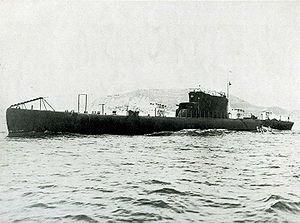This article includes a list of general references, but it lacks sufficient corresponding inline citations. (February 2013) |
 Domenico Millelire
| |
| Class overview | |
|---|---|
| Name | Balilla class |
| Builders | OTO |
| Operators | |
| Succeeded by | Ettore Fieramosca |
| Subclasses | Humaytá |
| In commission | 1927–1950 |
| Completed | 5 |
| Lost | 1 |
| Scrapped | 4 |
| General characteristics (as built) | |
| Type | Submarine |
| Displacement | |
| Length | 86.5 m (283 ft 10 in) |
| Beam | 7.8 m (25 ft 7 in) |
| Draft | 4.7 m (15 ft 5 in) |
| Installed power | |
| Propulsion |
|
| Speed |
|
| Range |
|
| Test depth | 110 m (350 ft) |
| Complement | 77 |
| Armament |
|
The Balilla class were the first submarines to be built for the Italian navy following the end of World War I. They were large ocean-going cruiser submarines designed to operate in the Indian Ocean based in Italy's East African colonies. The design was double-hulled and based on the German Type UE II submarine U-boats, one of which, U-120 was supplied to the Italians as a war reparation. A 425 horsepower (317 kW) auxiliary diesel engine was installed as an extra generator.
During the war, the boats were stationed in the Mediterranean in 1940 but proved too large to be effective patrol submarines. Their only success was the sinking of the British submarine HMS Triad by Enrico Toti on 15 October 1940. After 1941 they were used as transport submarines to supply Italian forces in North Africa. The surviving boats were scrapped after the war.
One submarine, Humaytá, was built for the Brazilian Navy to a modified design.